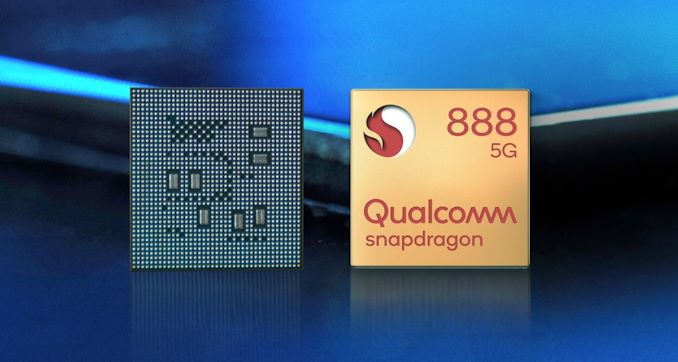The Qualcomm AR8033-AL1A is a Gigabit Ethernet PHY (Physical Layer Transceiver) designed for use in various networking applications, including routers, switches, gateways, and access points. This PHY Chip supports Gigabit Ethernet (10/100/1000 Mbps) speeds and is compliant with IEEE 802.3 standards, offering features like low power consumption, auto-negotiation, MDI/MDX auto-sensing, and Energy Efficient Ethernet (EEE) support.
If you're looking for equivalent ICs to the Qualcomm AR8033-AL1A, you would be seeking other Gigabit Ethernet PHYs that offer similar performance and features. Below are some alternatives from other manufacturers that match the functionality of the AR8033-AL1A:
1. Broadcom BCM54610S
Ethernet Standard: 10/100/1000 Mbps (Gigabit Ethernet)
Features:
Compliant with IEEE 802.3, including auto-negotiation and MDI/MDX auto-sensing.
Energy Efficient Ethernet (EEE) for reduced power consumption.
Supports advanced features like Jumbo Frames, Wake-on-LAN, and Low Power Idle.
Applications: Typically used in network switches, routers, and Ethernet-based industrial devices.
Advantages: Broadcom’s PHY solutions are known for high performance, reliability, and wide adoption in the industry.
2. Realtek RTL8211F
Ethernet Standard: 10/100/1000 Mbps (Gigabit Ethernet)
Features:
Integrated auto-negotiation, MDI/MDX auto-sensing, and Energy Efficient Ethernet (EEE).
Fully compliant with IEEE 802.3 and 802.3u standards.
Offers Wake-on-LAN and power-down modes for energy efficiency.
Applications: Commonly used in routers, access points, switches, and embedded systems.
Advantages: Realtek provides cost-effective PHY solutions with solid performance, suitable for consumer-grade networking devices.
3. Marvell 88E1540
Ethernet Standard: 10/100/1000 Mbps (Gigabit Ethernet)
Features:
Auto-negotiation and MDI/MDX auto-sensing.
Energy Efficient Ethernet (EEE) for low power consumption.
Compliant with IEEE 802.3 and 802.3ab standards for Gigabit Ethernet.
Applications: Found in routers, home gateways, and switches.
Advantages: Marvell offers reliable Ethernet PHYs with good power efficiency and performance.
4. Microchip LAN8720
Ethernet Standard: 10/100/1000 Mbps (Gigabit Ethernet)
Features:
Low-power Gigabit Ethernet PHY supporting IEEE 802.3, 802.3u, and 802.3ab.
Integrated auto-negotiation, MDI/MDX auto-sensing, and Energy Efficient Ethernet (EEE).
Supports features like Wake-on-LAN, Jumbo Frames, and power-down modes.
Applications: Ideal for routers, access points, IoT devices, and other networking systems requiring a reliable, low-power PHY solution.
Advantages: Known for low power consumption, ease of integration, and cost-effectiveness in consumer and embedded devices.
5. Texas Instruments DP83867IR
Ethernet Standard: 10/100/1000 Mbps (Gigabit Ethernet)
Features:
Fully compliant with IEEE 802.3, 802.3u, and 802.3ab standards.
Supports auto-negotiation and MDI/MDX auto-sensing.
Offers Energy Efficient Ethernet (EEE) for reducing idle power consumption.
Jumbo Frame support and Wake-on-LAN capability.
Applications: Suitable for routers, switches, industrial networking applications, and automated systems.
Advantages: Texas Instruments is known for high-quality, power-efficient Ethernet PHY solutions.
6. Microsemi VSC8511
Ethernet Standard: 10/100/1000 Mbps (Gigabit Ethernet)
Features:
Supports IEEE 802.3 standards, including auto-negotiation and MDI/MDX auto-sensing.
Integrated Energy Efficient Ethernet (EEE) for low power consumption.
Includes features like Jumbo Frame support and Wake-on-LAN.
Applications: Found in Ethernet switches, routers, embedded systems, and industrial IoT devices.
Advantages: Microsemi PHYs are known for their robustness and low power operation, especially in industrial and embedded environments.
7. Broadcom BCM84881
Ethernet Standard: 10/100/1000 Mbps (Gigabit Ethernet)
Features:
Fully compliant with IEEE 802.3 and includes support for auto-negotiation and MDI/MDX.
Energy Efficient Ethernet (EEE) and Wake-on-LAN support for reduced power consumption.
Integrated Jumbo Frame support and low-power idle modes.
Applications: Suitable for use in routers, switches, and industrial network devices.
Advantages: Broadcom offers highly reliable and widely used PHY chips with good support for networking features and power management.
Key Considerations:
Compliance with IEEE Standards: All these alternatives comply with IEEE 802.3 standards (including 802.3ab for Gigabit Ethernet), ensuring they work seamlessly in standard Ethernet networks.
Auto-Negotiation & MDI/MDX: These PHYs support auto-negotiation (for automatic detection of link speeds) and MDI/MDX auto-sensing (for proper connection regardless of cable orientation).
Energy Efficient Ethernet (EEE): Many of these PHYs support EEE, reducing power consumption during low-traffic or idle periods, which is important for energy-conscious designs.
Applications: These PHYs are used in consumer networking devices, industrial systems, embedded devices, and IoT applications, just like the AR8033-AL1A.
Conclusion:
The Qualcomm AR8033-AL1A is a Gigabit Ethernet PHY commonly used in routers, switches, and other networking devices. Its equivalents from other manufacturers, such as the Broadcom BCM54610S, Realtek RTL8211F, Marvell 88E1540, Microchip LAN8720, Texas Instruments DP83867IR, and Microsemi VSC8511, offer similar functionality with Gigabit Ethernet support, auto-negotiation, MDI/MDX auto-sensing, and Energy Efficient Ethernet (EEE) capabilities. Your selection will depend on factors like power consumption, cost, and specific design requirements. All of these alternatives are reliable and widely used in the networking industry.
Other

What is HBM (High Bandwidth Memory)?
2024.09.05

What is Antenna Tuner IC?
2024.09.20

What’s the Difference between LPDDR and DDR?
2024.09.25

Snapdragon 888 5G Mobile Platform
2024.09.26

What is WiFi 6E?
2024.09.26

What is Bluetooth Audio SoC?
2024.09.26

What's HBM3E (High Bandwidth Memory 3)?
2024.09.26

What is an Audio Codec?
2024.10.09





